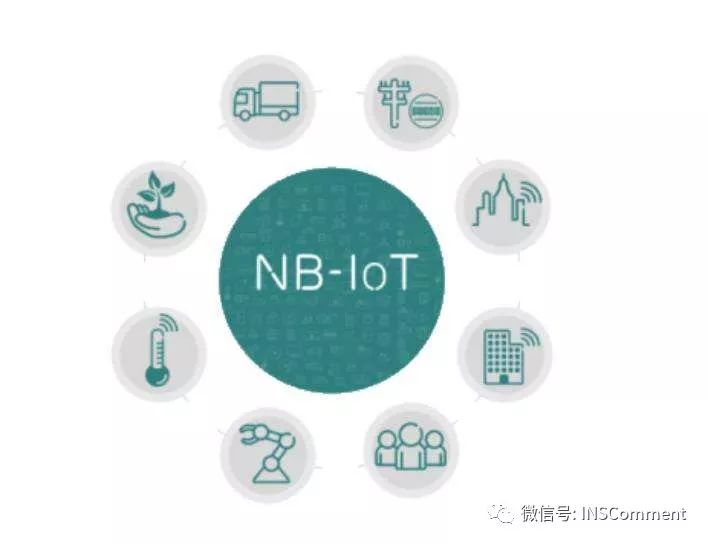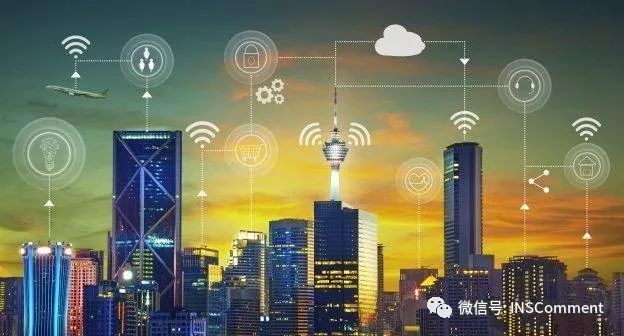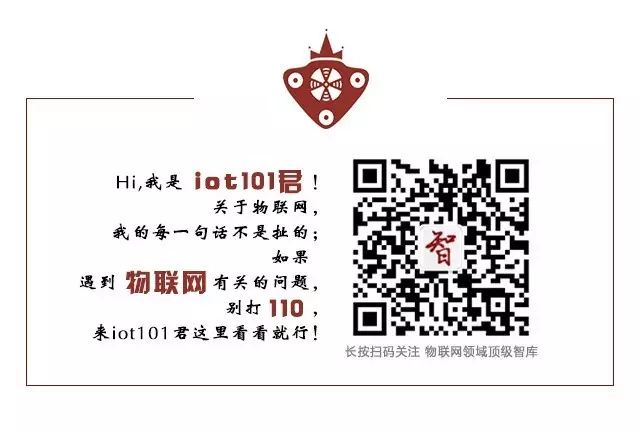
Source: INSComment by Yinshi Anping
Author: Yinshi Lao Wang
Published by IoT Think Tank
Please cite the source and origin
—— [Introduction] ——
We know that communication has always been two-way, so the fact that most NB-IoT applications only achieve data uplink transmission is certainly not the ultimate goal; it is merely the current status.
Definition and Current Status of NB-IoT
In IoT communication, NB-IoT is undoubtedly revolutionary. Led by Huawei and defined by 3GPP, NB-IoT is a narrowband IoT technology suitable for long-distance communication based on cellular networks. From the current development of NB-IoT, whether in terms of technical reserves, chip manufacturing, or the investment and support from operators in NB-IoT infrastructure, NB-IoT is poised for tremendous growth. In 2017, the collaboration and commercialization of NB-IoT smart locks by Huawei, ofo, and China Telecom marked that NB-IoT technology has matured and can be applied at scale.

Characteristics and Applications of NB-IoT
NB-IoT has the characteristics of wide coverage, low power consumption, and low cost, which existing technologies from 2G to 5G cannot satisfy. Taking shared bicycle NB-IoT smart locks as an example, the wide coverage and strong penetration of NB-IoT first solve the issues of signal shielding and instability, which lead to the inability to timely return vehicle status data to the cloud for billing and unlocking after users lock their bikes. Moreover, NB-IoT’s strong linking capability can support massive device connections with low power consumption and no disconnections, so shared bicycles do not have to worry about the lock running out of battery. Most importantly, as NB-IoT products develop, the chip costs of NB-IoT will be significantly lower than current communication chip prices. Therefore, we have no reason to doubt that the development of NB-IoT will continue to improve.
Application developers utilize the advantages of NB-IoT to apply it widely in intelligent metering, smart parking, vehicle tracking, logistics monitoring, smart agriculture, smart wearables, smart homes, smart communities, smart cities, and more. For these applications, NB-IoT first resolves the traditional uplink data issue, which is to transmit data obtained by IoT terminal devices back to the cloud. For instance, in smart metering, the primary goal is to achieve the transmission of user electricity consumption data for billing. Other applications, such as smart parking, logistics monitoring, smart communities, and smart homes, follow the same principle, where most applications are solely focused on data uplink transmission.

Goals of NB-IoT Communication
Currently, NB-IoT can fully meet existing demands. However, we know that communication has always been two-way, so the fact that most NB-IoT applications primarily achieve uplink transmission is certainly not the ultimate goal; it is merely the current status.
With the rapid development of artificial intelligence technology, especially in the past two years, the integration of artificial intelligence technology with big data has led to more applications that not only focus on enabling smart terminals to complete uplink data transmission but also utilize these returned data for analysis to guide the next steps of terminal operations through downlink control. Based on the characteristics of NB-IoT, there will be more applications achieving two-way communication; uplink merely satisfies the current status, while downlink control is the ultimate goal of NB-IoT applications, which will be key to the further intelligent development of NB-IoT applications.
The development of artificial intelligence technology has transformed the status of more IoT terminals, making them smarter. We can imagine remotely and flexibly changing a user’s electricity tariff, or remotely turning off or adjusting the angle of a vehicle tracking camera, or remotely turning on a specific appliance in a smart home, etc. In future terminal management, more will involve sending downlink command data to change the working state of terminals, better serving humanity; this is the most important significance of communication.

Security Risks of NB-IoT
However, the development of NB-IoT will inevitably lead to changes in the latest attack directions of network hackers. We can see that many applications of NB-IoT are related to national livelihood, including smart meters, smart cities, urban heat and electricity conduits, and industrial production data transmission. NB-IoT provides the best data transmission experience for these livelihood applications but also presents certain security risks. Especially for applications related to people’s livelihoods, the impact of security risks may be greater. In applications like NB-IoT, a lack of control over security risks equates to leaving opportunities for hackers to cause damage.
We can imagine that when we obtain data through NB-IoT terminals and, after data analysis, send relevant control commands to remote terminals, if these commands are intercepted or altered by hackers and resent, this will pose risks to IoT terminals. For instance, as mentioned earlier regarding NB-IoT smart locks, if an illegal unlocking command is sent by hackers to hundreds of thousands of shared bicycles across the country, users may find that all bicycles cannot be locked! This would be a shocking event!

Li Weigang, a cryptography expert who studied under domestic cryptography expert Nan Xianghao and is dedicated to research on security defense for IoT commands in China, has stated regarding IoT security: “With the development of artificial intelligence technology, the traditional security mindset that can only achieve passive protection is no longer suitable for the modern security defense landscape of artificial intelligence. The core of AI defense is the unauthorized control of intelligent terminals; control commands, as the core of smart device control, will become the greatest security risk for the entire system. If unauthorized individuals control the commands, it equals hijacking the core of the system’s defense framework. Protecting remote control commands will be the core of the new generation of AI IoT security defense.” In my view, in NB-IoT applications, it is essential to encrypt and authenticate not only the uplink data returned by intelligent terminals but also to strengthen the security defense of system downlink control commands. Designers of NB-IoT applications must adopt a proactive mindset to consider the information security risks of NB-IoT.
Security Risk Alerts for NB-IoT
Ericsson, one of the main standard setters for NB-IoT, summarized six major challenges for IoT security in its “2017 IoT Security” white paper. In addition to traditional device security and intermediary trust, it emphasized the establishment of a security system for data interaction at the application layer and end-to-end, and that information security must be considered from the design stage.

According to the “Analysis of the Five Hottest Trends in 2018” by the Forward Industry Research Institute, security is one of the hottest trends in the market. From an industrial perspective, in 2018, we will rely on connected devices to make our lives better and easier, but security is essential. All participants in the IoT ecosystem need the security of devices, data, and solutions, and security must start from the design and development stages of devices.
The development of NB-IoT makes applications smarter, but we must also recognize the information security risks brought by NB-IoT. With the issuance of information security-related policies and regulations in China in 2017, information security has become a national strategy. The more advanced the field is in terms of intelligence, the greater the risk of information security, and it is essential to pay attention to its security defenses.
[Conclusion]
The development of NB-IoT will inevitably bring security risks in new application areas. On one hand, integrators of NB-IoT must emphasize the security protection of the entire system, particularly the establishment of a security system from the application layer to each endpoint in the IoT. On the other hand, designers of NB-IoT must have a risk awareness regarding information security and pay attention to it from the initial design phase of the application. Regarding the current status of NB-IoT applications, while uplink data transmission is indeed important, downlink security control is the ultimate goal.

Previous Hot Articles (Click on the title to read directly):
-
“How Difficult Is It to Develop Smart Locks for Shared Bicycles?”
-
“Cognitive Computing, Blockchain IoT, IoT Security… Those Who Understand Will Control the Future”
-
“2017-2018 China IoT Industry Panorama Report – The Deep Transformation of Industry by IoT Has Begun”
-
“A Cartoon Explains: Besides WiFi and Bluetooth, What Can the Recently Hot NB-IoT Do?”
-
“A Cartoon Explains: What Is LoRa, the Buzzword Behind NB-IoT?”
